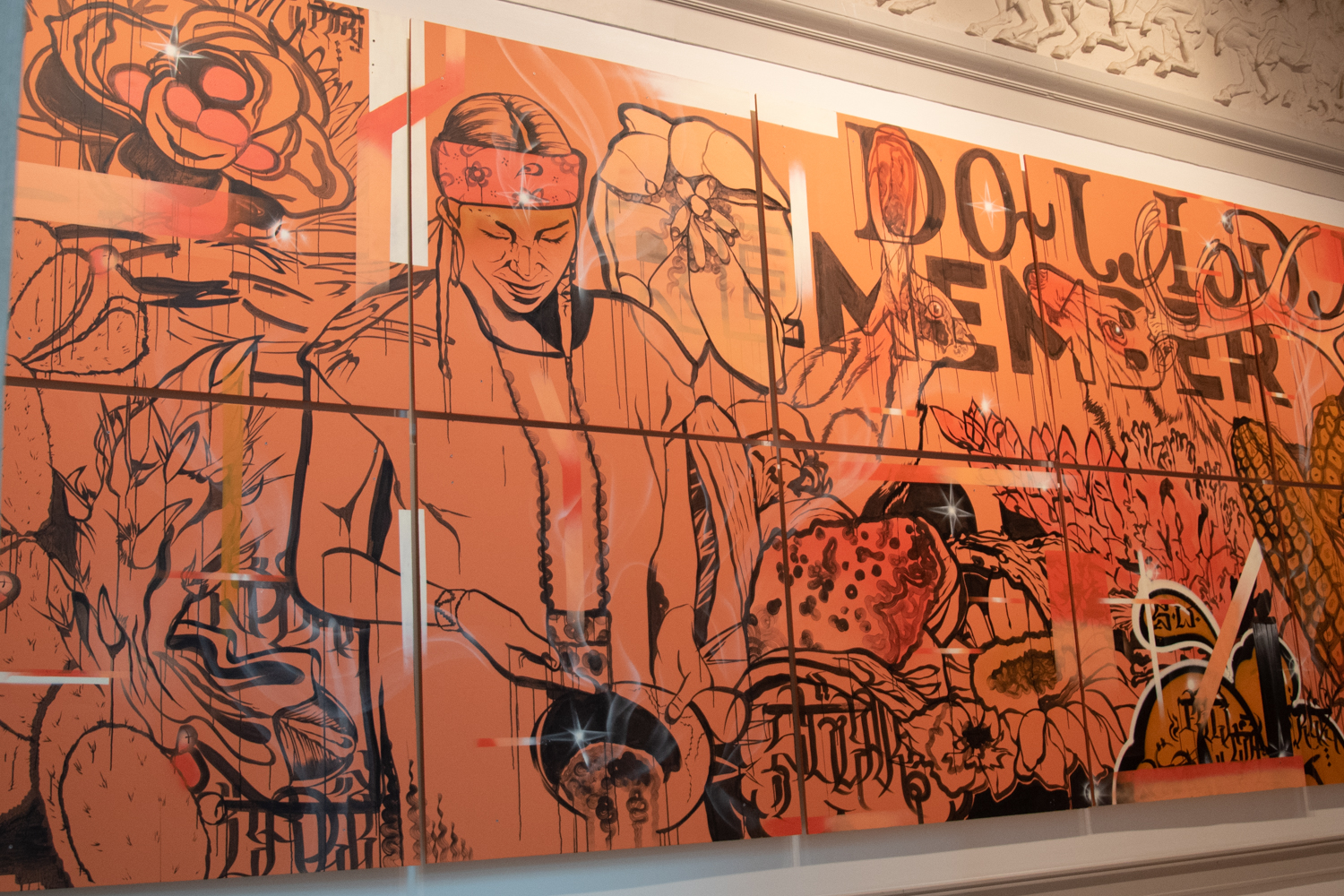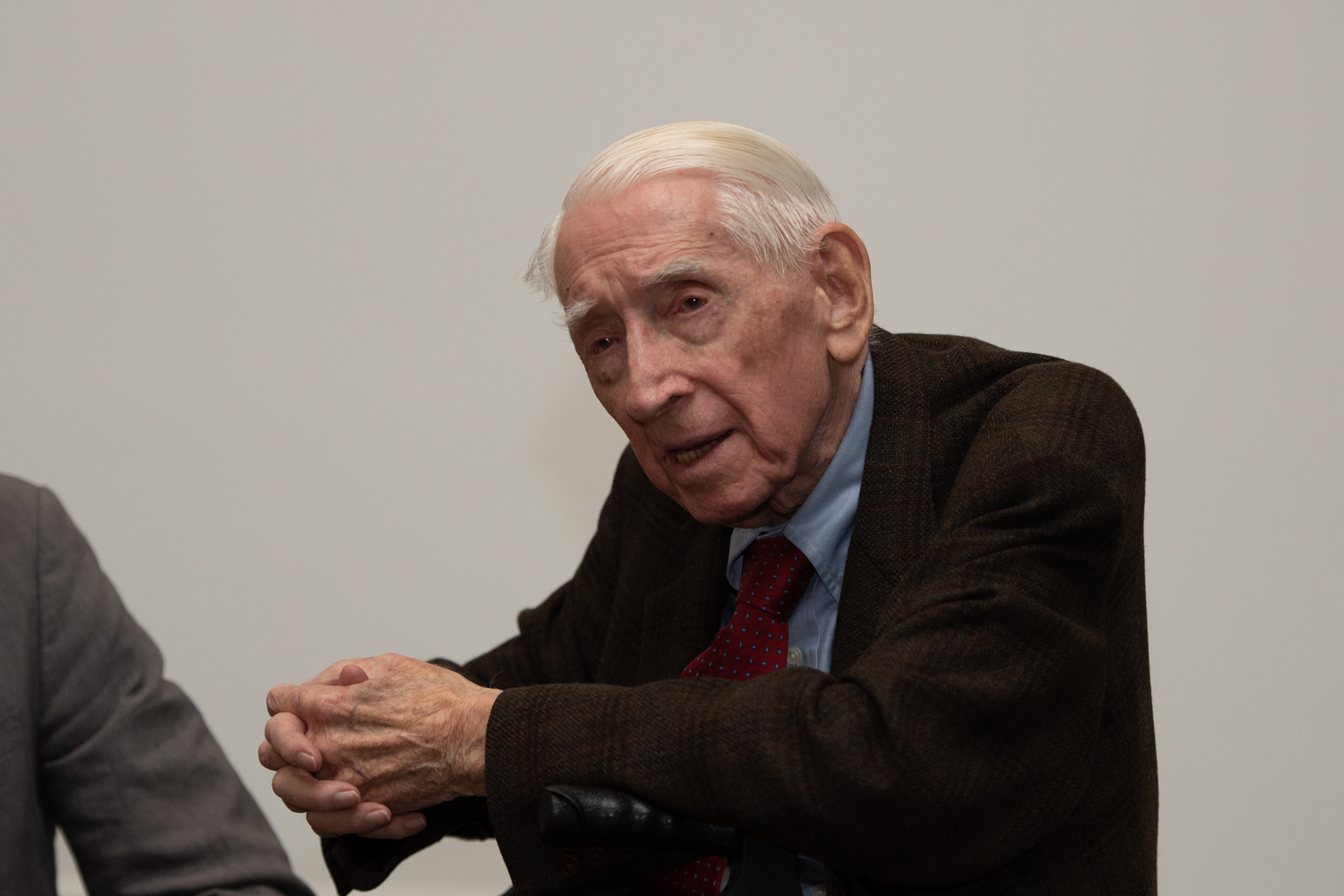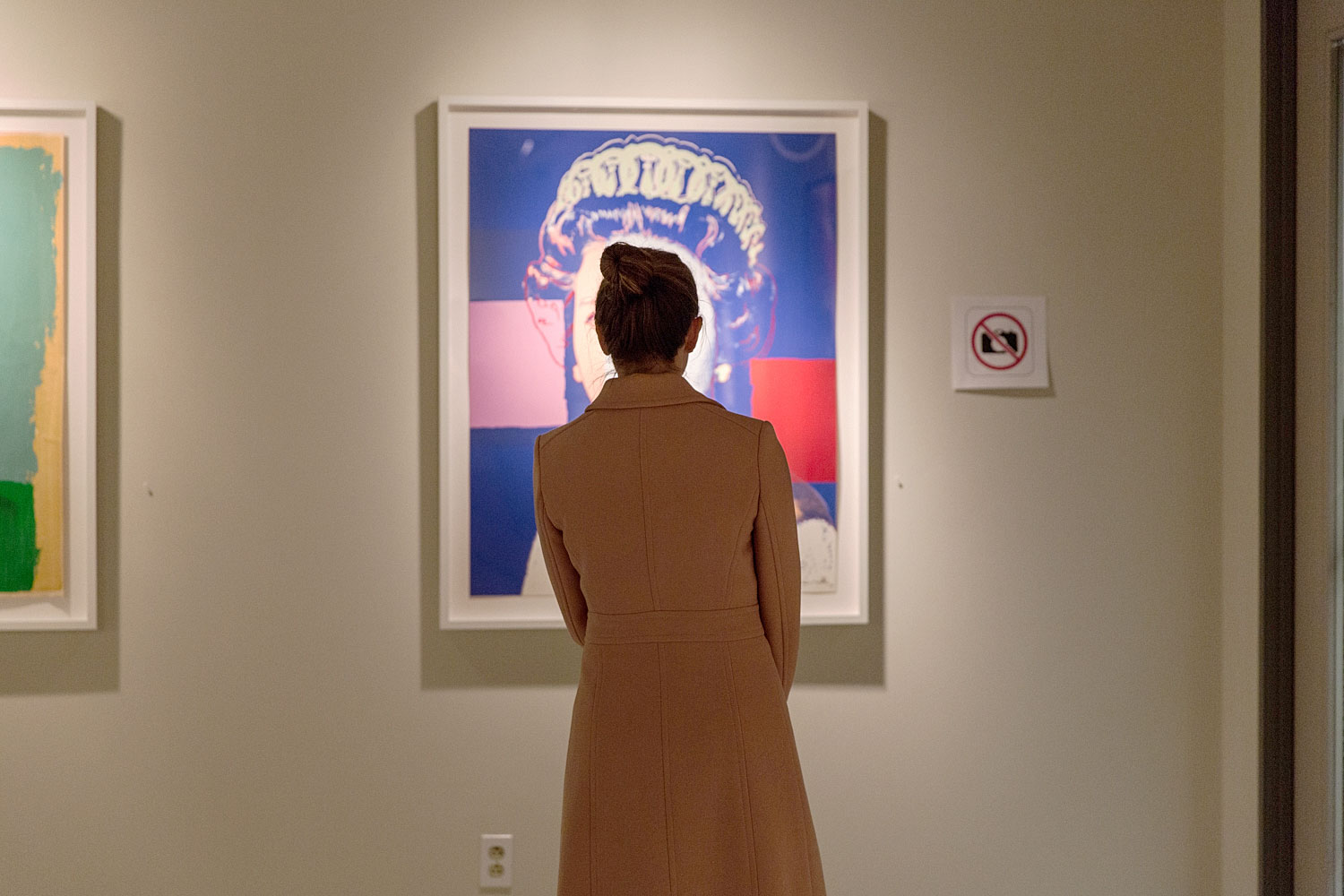By Ruth Steinhardt
In the Corcoran School of the Arts and Design’s historic Flagg Building, artist Gay Glading stood before her “Second Shield of Venus”—a human-sized circular canvas of three concentric rings, airbrushed in vibrant spectrums—and remembered the work that went into making it. To create the flowing, seamless effect of the gradients and the impression of depth created by the sharply delineated rings, she had to partition off each section with masking tape and cover it with plastic while she worked on its neighbor.
“I was in my studio surrounded by hundreds of colors, spraying them one at a time,” she said. “And I couldn’t see what it would look like until I took the tape and the covering off.”
The process, she implied, was a little nerve-wracking. But the resultant painting is one of her best-known, having hung for some time in the Smithsonian Air and Space Museum and traveled to Moscow as part of an art exchange with the State Tretyakov Gallery.
Ms. Glading is among the artists featured in “Full Circle: Hue and Saturation in the Washington Color School,” the Luther W. Brady Art Gallery’s inaugural show in its new Flagg Building home on the George Washington University campus.
Lenore Miller, director and chief curator of university galleries, said she was “so honored to be in this grand, beautiful building.”
“We inaugurate the Brady Art Gallery’s new location in the Flagg Building with a high quality exhibition indicative of the many major ones staged at the Luther W. Brady Art Gallery over the past 15 years,” she said. “For this exhibition, we aspire to showcase the grand nature of this historic building with its rich history of teaching and exhibitions.”
The Brady Art Gallery was dedicated in honor of its founding patron, oncologist Luther W. Brady, B.A. ‘46, M.D. ’48, in 2002. Originally housed in GW’s Media and Public Affairs Building, the gallery has hosted educational events and exhibitions by renowned artists such as Howard Hodgkin, Jules Olitski and Utagawa Hiroshige.
“Full Circle” was part of a triple opening at the Flagg Building Thursday evening. Joseph Kunkel’s “Bridging Boundaries” reopened in the atrium, while the second-floor rotunda debuted “Lone Prairie,” an experiential video and sound installation by Colorado art collective M12.

The reopened "Bridging Boundaries" includes a mural-in-progress by Texas graffiti artist Joerael Julian Elliott. (Sydney Elle Gray/GW Today)
Among the crowds of artists and art lovers packing the building was a special guest: Dr. Brady himself.
The works on display “were critically important in the change that took place in abstract expressionism,” Dr. Brady said. “It represents the first exhibition in this new space, and I’m delighted you’re all here and very pleased with the exhibit.”
The exhibition, which will run through October, features artists from the Washington Color School. The midcentury abstract arts movement is distinguished by its use of color fields and the location of its core artists in Washington, D.C., at a time when New York City was considered the epicenter of artistic innovation.

Luther W. Brady, B.A. ‘46, M.D. ’48, speaks with guests at the "Full Circle" opening reception. (Sydney Elle Gray/GW Today)
Bibiana Obler, associate professor of art history at the Corcoran School, said the movement is notable not just for its visual techniques but also for its political underpinnings. As an example, she cited Alma Thomas, whose “Nature’s Red Impressions” is part of the GW art collection and is featured in the exhibit. Though abstract, Dr. Obler said, “Nature’s Red Impressions” is reminiscent of Ms. Thomas’s earlier figurative works, particularly her “March on Washington.”
“You can see the relationship between the people holding signs in ‘March on Washington’ and the abstract daubs she would become famous for,” Dr. Obler said. “She was making very political art, and there’s politics to an older black woman doing abstract art in the late 1960s. The more you look the more there’s really interesting stories behind these artists and why they did what they did.”




